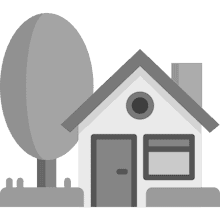
There are a number of reasons to run electrics outside a property. Lighting can be for security, lights that indicate the way in the dark or you may simply want to put decorative lights in the garden to help you get year-round use out of it.
You might be making a workshop, studio or summerhouse out of an old outbuilding and need to get electrics out there.
All those uses, and there may be many more, fall into two distinct categories.
The first is demands on electric power that are close enough to the property to be installed without having to run a separate power line from the house.
The second is those that will require that separate supply, and those are the ones that you are unlikely to be able to do yourself.
Electric Regulations
The situation regarding electric work on your property has changed in UK in the last few years. The introduction of new building regulations, in particular Part P, means that DIY electrics have to be certified as conforming to those new regulations, by a certified inspector.
It’s no longer really possible to do anything other than swapping over fittings, possibly adding to an existing circuit, without have the work certified, which is a nuisance and costs money.
This makes it more likely that getting an electrician in to do the work will be cheaper and easier.
You can do a lot of the work yourself, such as mounting lights, digging trenches, drilling holes to take the electric cable and even laying the cables, but the electrician is the one who has to make all the connections, test everything and fire it up.
For those items that can be supplied from the inside of the house this is less of an issue, but the regulations do change from time to time and it’s worth checking with a local authority building inspector before doing the work.
If you are putting say, security lights outside, mounted on the wall with all the wiring inside the house, then that may not need to be certified.
Outside Electric Sockets
As soon as you introduce an outside switch, or supply power to anything that’s not attached to the house, then you’re into work that needs to be certified.
So you could, for example, put some waterproof outdoor sockets on the wall on a spur from a ring main as long as the supplying cable went straight into the house from the back of the sockets.
This wouldn’t be something that needs to be certified. It’s not advisable though, because if you’re going to use it for power tools in the garden then you really out to have an RCD, a circuit breaker, in there as an additional safety precaution.
Full Electric Supply
If you want to take an electric supply to another place, like an outbuilding or garage, you are definitely into the realms of work that needs to be certified.
The supply needs to be taken from its own point on the consumer unit (‘fuse box’). Where the cable goes outside it should be pinned to a wall (note that a fence is not considered compliant) or buried underground in armoured cable.
If the cable itself isn’t armoured it should be in armoured conduit. You can put the cable overhead but it needs to be at least three and a half metres up, something that’s probably not practical.
Then at the other end the electric supply needs to be terminated correctly, probably in a small consumer unit which then distributes power to lighting and power circuits accordingly.
Consider an Electrician
Looking at all the issues it might be best to get an electrician in to do the work.
If it’s a major job then have a chat with the electrician first to see what’s involved then agree the work that you can do yourself. That should keep the cost down.


